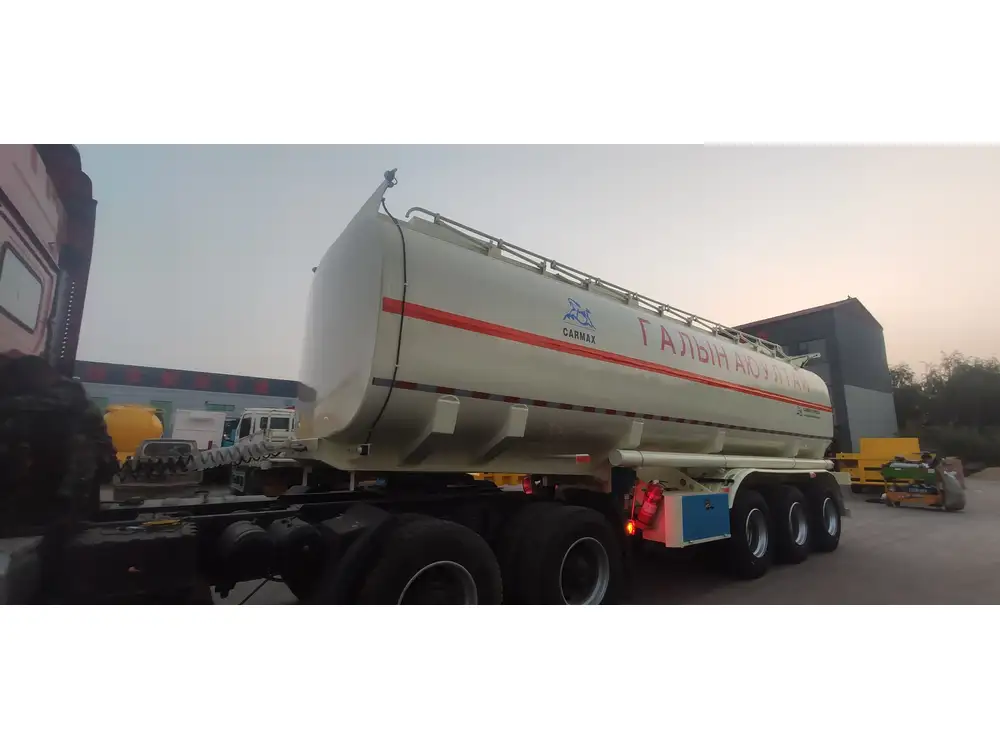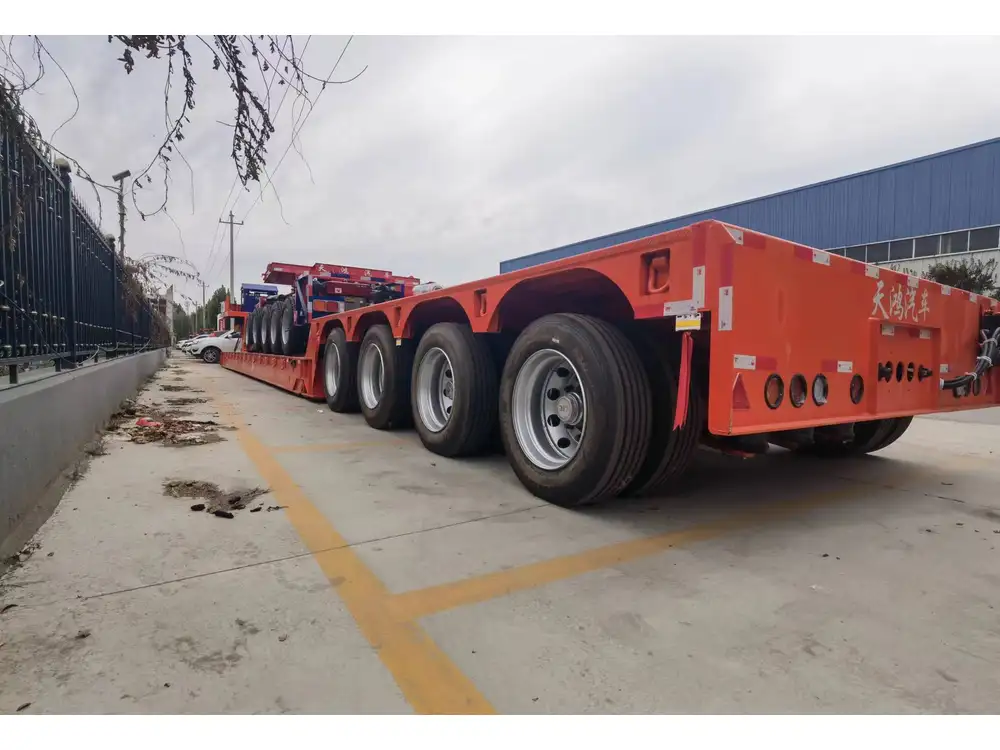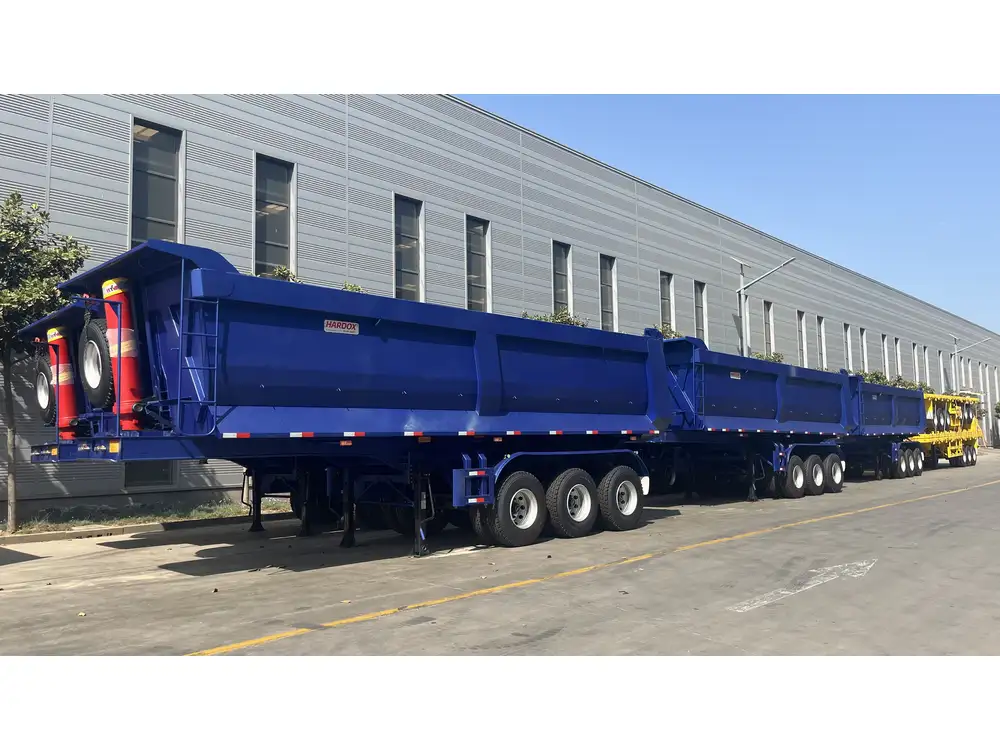Introduction to Trailer Heights
When contemplating the world of semi-trailers, one may find themselves asking, “How tall are trailers?” This seemingly straightforward question opens the door to a multitude of variables that manufacturers, regulators, and operators must navigate. Trailer height is not merely a dimensional specification; it’s a multifaceted aspect that impacts regulations, vehicle compatibility, payload capacity, and safety.
Standard Trailer Heights
The height of a semi-trailer can vary significantly based on its design and intended use. Here is a breakdown of standard semi-trailer heights:
| Trailer Type | Standard Height (ft) | Common Uses |
|---|---|---|
| Standard Dry Van | 13.5 – 14 | General freight transportation |
| Flatbed Trailers | 13.5 – 14 | Construction materials, heavy equipment |
| Refrigerated Trailers | 13.6 – 14 | Perishable goods transportation |
| Lowboy Trailers | 11.0 – 12 | Heavy machinery, oversize loads |
| Gooseneck Trailers | 8.0 – 12 | Agricultural equipment, vehicles |
| Car Haulers | 12.0 – 13.5 | Transporting vehicles |

Regulatory Considerations
In the United States, the Federal Highway Administration mandates a maximum allowable height of 13.5 feet for commercial vehicles, including trailers. However, individual states may have specific regulations that pertain to roads and bridges, potentially affecting the maximum height limitations. It is essential for operators to familiarize themselves with regional regulations, especially when traversing state lines.
Impact of Height on Operations
Load Restrictions and Compliance
The height of a trailer directly influences load capacity and freight configuration. Cargo must be arranged carefully to ensure compliance with weight distribution guidelines, which vary based on the trailer height. Taller trailers might allow for more vertical space; however, operators must be cautious of height restrictions at loading docks, bridges, and overhead structures.

Key Factors Affecting Load Compliance:
- Center of gravity: Higher trailers may present a stability risk, particularly when loaded unevenly.
- Load securing: Taller loads require more robust securing mechanisms to mitigate risks during transport.
- Inspecting routes: Advanced planning may be necessary to account for low-clearance areas.
Height Variations Based on Trailer Types
Understanding the nuances of various trailer types is crucial. The following are common types of trailers and factors influencing their height.
Dry Van Trailers
Standard dry vans are typically around 13.5 to 14 feet in height. These trailers are designed for regular freight and provide protection from the elements, which is paramount for various types of goods.

Considerations:
- Loading docks usually accommodate standard dry van heights.
- Adjustments to height can be made by utilizing specific loading techniques or equipment.
Refrigerated Trailers
Reefer trailers range typically from 13.6 to 14 feet. These trailers are designed for transporting temperature-sensitive goods, necessitating insulation and cooling equipment, which can add to the overall height.
Considerations:
- Reefer height affects both capacity and efficiency. Operators must calibrate their cooling equipment to maintain optimal performance without exceeding height restrictions.

Flatbed Trailers
Generally, flatbed trailers measure 13.5 to 14 feet high, but the open design allows for variable cargo heights. The versatility afforded by flatbed trailers makes them popular for transporting oversized loads.
Considerations:
- Load regulation may be stricter due to the open nature of flatbeds. Operators should be particularly cautious of securing taller loads.
Height Measurement Techniques
Accurate measurement of trailer height is paramount for compliance and safety. Here are measurement techniques and best practices that operators should follow:

Manual Measurement
- Select a Level Surface: Ideally, the trailer should be parked on a level area to ensure accuracy.
- Use a Measuring Device: Employ a tape measure or ruler for height measurement. Start from the ground and extend the measurement to the highest point of the trailer.
- Document the Height: Keeping accurate records aids in route planning and ensures compliance with height regulations.
Automated Measurement Systems
Advanced technology introduces laser height measurement systems that provide real-time data regarding trailer height. These systems are beneficial in ensuring compliance and enhancing safety during loading and unloading operations.
Considerations for Specialized Trailers
Some trailers, due to their unique purpose, may have specialized height considerations:

Lowboy Trailers
Lowboy trailers, designed for transporting heavy equipment, usually have a height ranging from 11 to 12 feet. Their lower profile enables the transport of wider and taller loads while maintaining compliance with road regulations.
Extendable Trailers
Extendable trailers can adjust their length and height. This flexibility is especially useful for transporting oversized loads requiring additional spacing. Attention to height must be given when in the extended position, as they may exceed standard height limits during transit.
The Aesthetic Aspect: Customizing Trailer Height
While regulatory compliance is critical, there is an emerging trend of customizing trailer heights for aesthetic purposes. Companies seeking to enhance branding or marketing efforts are opting for unique designs.

Aesthetic Height Customization
- Graphics and Branding: Taller trailers offer more surface area for branding.
- Design Flexibility: Customizations necessitate balancing aesthetic appeal with regulatory guidelines.
Cautions
Equipment modifications should never compromise safety or structural integrity. Operators must always ensure modifications do not exceed height regulations or pose risks during transport.
Conclusion: Navigating the World of Trailer Heights
In summary, understanding the various heights of trailers is essential for manufacturers, operators, and regulators alike. Whether for compliance, operational efficiency, or aesthetic appeal, we must consider multiple factors influencing the height of semi-trailers.
By comprehensively analyzing the diverse types of trailers and their respective height considerations, one can navigate the operational landscape with confidence. Knowledge of height regulations, load considerations, and the importance of accurate measurement equips operators to optimize their transportation strategies.
As the logistics landscape continues evolving, staying informed about trailer dimensions and their implications will ensure that we address safety, compliance, and operational efficiency in a timely and effective manner. The world of semi-trailers is vast, and understanding their height is just the beginning of mastering this complex and dynamic industry.



